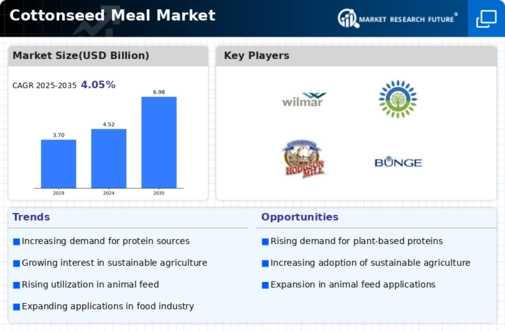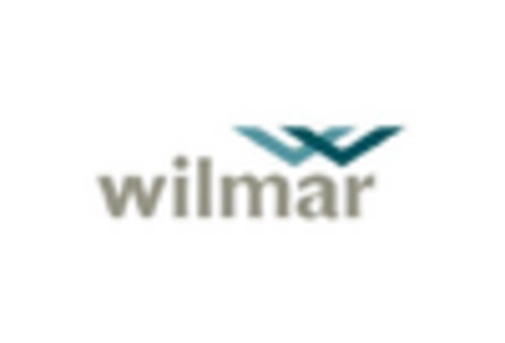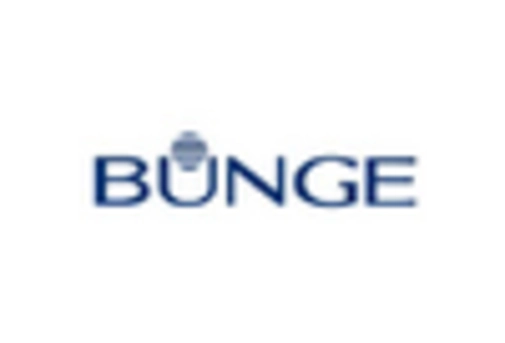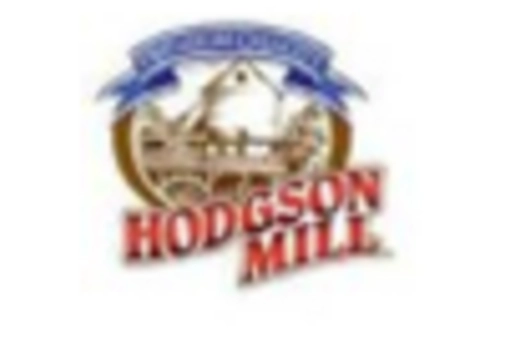Rising Demand for Animal Feed
The Cottonseed Meal Market is experiencing a notable increase in demand for animal feed, particularly in the livestock sector. Cottonseed meal serves as a high-protein supplement, which is essential for the growth and development of various livestock, including cattle, poultry, and swine. As the global population continues to rise, the need for efficient protein sources in animal husbandry becomes more pressing. In 2025, the demand for cottonseed meal in animal feed is projected to reach approximately 5 million metric tons, reflecting a compound annual growth rate of around 4.5%. This trend indicates a robust market potential for cottonseed meal as a sustainable and cost-effective feed ingredient.
Expansion of Oilseed Processing
The Cottonseed Meal Market is significantly influenced by the expansion of oilseed processing facilities. As more oilseed processing plants emerge, the production of cottonseed meal increases, thereby enhancing its availability in the market. The processing of cottonseed not only yields oil but also generates meal, which is a valuable byproduct. In recent years, the number of oilseed processing plants has grown, leading to an estimated increase in cottonseed meal production by 3 million metric tons annually. This expansion is likely to bolster the Cottonseed Meal Market, providing a steady supply to meet the rising demand from various sectors, including animal feed and aquaculture.
Nutritional Benefits of Cottonseed Meal
The Cottonseed Meal Market is also propelled by the recognized nutritional benefits of cottonseed meal. Rich in protein, fiber, and essential fatty acids, cottonseed meal is increasingly being incorporated into various diets, particularly in animal nutrition. The protein content of cottonseed meal can range from 36% to 41%, making it an attractive option for livestock feed. As awareness of the nutritional advantages of cottonseed meal grows, its adoption in animal feed formulations is expected to rise. In 2025, the market for cottonseed meal is projected to account for approximately 15% of the total protein feed market, indicating its vital role in enhancing livestock health and productivity.
Technological Innovations in Processing
The Cottonseed Meal Market is witnessing advancements in processing technologies that enhance the efficiency and quality of cottonseed meal production. Innovations such as solvent extraction and mechanical pressing are being adopted to optimize oil extraction while preserving the nutritional integrity of the meal. These technological improvements not only increase the yield of cottonseed meal but also reduce production costs. In 2025, it is estimated that the implementation of advanced processing techniques could lead to a 10% increase in the overall quality of cottonseed meal. This enhancement in quality is likely to attract more buyers in the animal feed sector, further driving the growth of the Cottonseed Meal Market.
Growing Interest in Sustainable Agriculture
The Cottonseed Meal Market is benefiting from the growing interest in sustainable agricultural practices. Farmers and producers are increasingly seeking eco-friendly alternatives to traditional feed sources. Cottonseed meal, being a byproduct of cotton oil extraction, aligns well with sustainability goals by minimizing waste and promoting resource efficiency. In 2025, it is anticipated that the market for sustainable feed ingredients, including cottonseed meal, will expand by 6%, driven by consumer preferences for environmentally responsible products. This shift towards sustainability not only enhances the appeal of cottonseed meal but also positions it as a key player in the evolving agricultural landscape.














